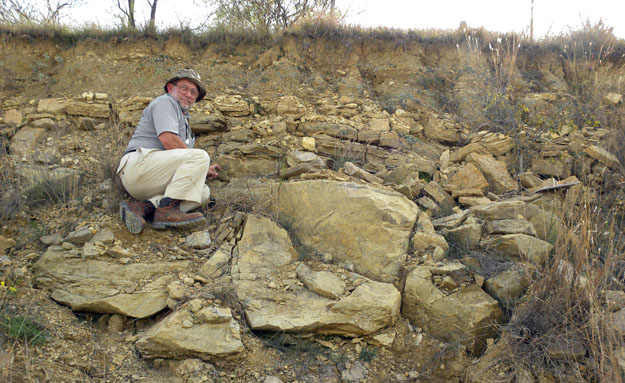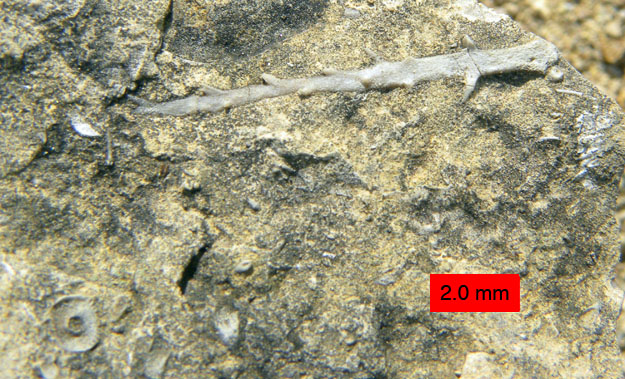BROWNWOOD, TEXAS–It was nearly a five hour drive from College Station, Texas, through the Hill Country to our first Permian exposure in West Texas. (We passed, by the way, through Killeen and Fort Hood.) It was worth the trip for all the strange features we found on this outcrop of the Valera Formation.

Tom Yancey, a paleontologist at Texas A&M University, seated on our little outcrop of the Valera Formation in West Texas (N31.48454°, W99.69368°).
We spent several hours measuring, describing and sampling this outcrop in ideal weather. We found plenty of examples of what we came here for: fossil microconchids, otherwise known as “worm tubes”.
We were surprised to also find abundant sea urchin (echinoid) spines in one of the limestone units here. These usually indicate normal marine salinity, but they are unaccompanied by other indicators such as brachiopods and bryozoans. A thick gypsum below our exposed rocks shows that we are likely dealing with elevated seawater salinity during the Permian in this area. A mystery. (And we love mysteries in this business.)

A barbed echinoid spine from the Valera Formation (Permian). In the lower left with the apparent hole in it is an echinoid test plate.
Tomorrow we visit a similar outcrop with microconchids. Now we have some hypotheses to test. Fieldwork is such a joy!




Pingback: Wooster Geologists » Blog Archive » Scene from the lab
Pingback: Wooster Geologists » Blog Archive » Wooster’s Fossil of the Week: A new microconchid genus and species (Permian of Texas)
i would like for you to investigate some samples that has been taken from west Texas dig that appear to be bones encased in red sandy rock. this find has a large area of bones that appear to be prehistoric of origin, if you would like a sample and more information let me know. My brother made the find and has plenty of samples
Hi Eddie: I’m happy to look at images of these possible fossils. You can email me at mwilson-at-wooster.edu.